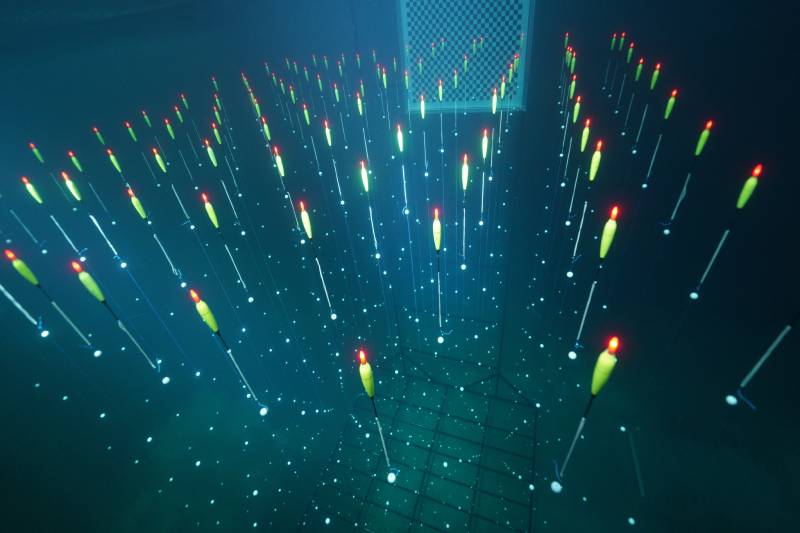Chinese scientists are embarking on the construction of a groundbreaking neutrino telescope in the South China Sea, aiming to unlock the mysteries of cosmic rays and explore the universe’s extreme phenomena.
The Tropical Deep-sea Neutrino Telescope (Trident), also known as Hailing (Ocean Bell) in Chinese, is set to become the world’s largest and most advanced neutrino observatory upon its completion in 2030.
Trident will be located 3.5 kilometers (2.2 miles) below the Western Pacific Ocean, where it will scan the surrounding seawater for the faint flashes of light produced when cosmic neutrinos interact with water molecules. By positioning Trident near the equator, researchers can capture neutrinos arriving from all directions as the Earth rotates, allowing for comprehensive all-sky observations.
In addition to unravelling the origins of cosmic rays, Trident will serve as a tool to test space-time symmetries, search for quantum gravity, and indirectly probe the mysteries of dark matter.
The observatory is taking shape approximately 540 kilometers (340 miles) south of Hong Kong, with supporting infrastructure on the nearby island of Yongxing for power supply and data transmission.
Cosmic rays that continuously strike Earth’s atmosphere have been a scientific mystery for over a century. While scientists have identified that they consist mostly of protons, these charged particles are deflected by magnetic fields in space, making it impossible to pinpoint their origin.
However, cosmic rays also contain neutrinos, electrically neutral subatomic particles that travel vast distances without deflection or absorption. They serve as a powerful tool for deciphering the origins of cosmic radiation by allowing scientists to capture them during interactions with water or ice atoms.
For the last two decades, scientists have utilized specialized telescopes at various locations, such as the South Pole, the Mediterranean Sea, and Russia’s Lake Baikal, to observe the interactions between incoming neutrinos and water or ice atoms.
China’s Trident will offer significantly greater sensitivity than existing neutrino telescopes, surpassing the capabilities of IceCube at the South Pole by a factor of up to 10,000 and KM3NeT in the Mediterranean by a factor of five. This vast underwater observatory will have a diameter of 4 kilometers and monitor approximately 7.5 cubic kilometers of seawater. It is projected to operate for 20 years and will consist of 1,200 vertical strings of sensors distributed on the seabed in a geometric pattern called Penrose tiling.
Each 700-meter (2,300-foot) string will carry 20 high-resolution digital optical modules to detect and measure the light produced during neutrino interactions with water molecules. The data collected will be used to reconstruct information about the cosmic origins of these particles.
The Trident project’s pilot phase is anticipated to conclude by 2026, funded by the Ministry of Science and Technology, the Shanghai municipal government, and Shanghai Jiao Tong University. This initiative is expected to make significant contributions to our understanding of cosmic rays and the fundamental nature of the universe.
Disclaimer: The views, suggestions, and opinions expressed here are the sole responsibility of the experts. No Science Currents journalist was involved in the writing and production of this article.


